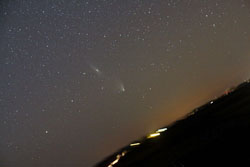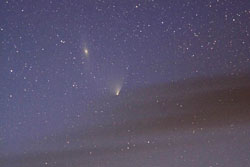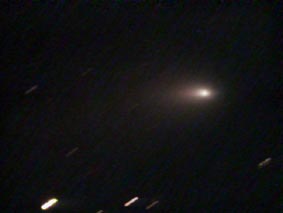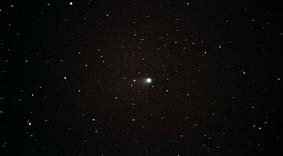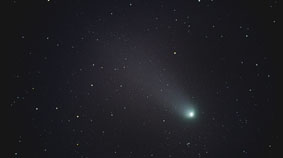| Comet 17P Holmes. 29th October
2007. Imaged from Bradworthy, Devon
Intes MN71 - 18cm Maksutov-Newtonian. Canon 350D. EQ6 pro.
*17P/Holmes is a periodic comet in our solar system discovered by the
British amateur astronomer Edwin Holmes on November 6, 1892.
Between October 23–24, 2007, the comet grew much brighter, going
from magnitude 17 to magnitude 2.8 in just a few hours, while in the constellation
Perseus. The first reported person to notice anything happening with 17P/Holmes
was J. A. Henríquez Santana on the island of Tenerife in the Canary
Islands; minutes later Ramón Naves in Barcelona noticed the comet
at magnitude 7.3. It became easily visible to the naked eye as a bright
yellow "star" in the northeast sky within Perseus. 17P/Holmes
appeared as the third brightest "star" in Perseus by October
25. While large telescopes showed fine-scale cometary details, naked-eye
views of the object revealed a view similar to looking at a star until
October 26. After October 26 the object began to appear more comet-like
to naked-eye observers. During this 2007 outburst, its orbit took it to
near opposition with respect to Earth, and since comet tails point away
from the Sun, this means Earth observers were looking nearly straight
down along its tail, making it appear as a bright sphere in telescopes.*
* Text from Wikipedia, the free encyclopedia
Imaged at the prime focus of our Intes, at a focal length of 1070mm.
|
 |

